
MAY CONTAIN NUTS

Search Shorpy
SHORPY ART

Framed or unframed, desk size to sofa size, printed by us in Arizona and Alabama since 2007. Explore now.
Join and Share
Ad-Free Shorpy
Shorpy is funded by you. Patreon contributors get an ad-free experience.
Learn more.

Recent comments
- Recent view
- Hudson’s Big Store
- Say what??
- Grapes?!
- A Beautiful Moment
- Such joy
- Bethune-Cookman University today...
- Yellow sky at morning
- Side Winder
- Air Quality?
- Sojourner Truth riot
- None were so blind(ed)
- The less famous sister
- Good ol' days?
- Rise and Fall
- Goo Goo Ga Joob
- Ticket Retention
- Not the only one
- Vagaries of War
- Killed by Amtrak
- Back to the Future
- Wanted --
- If you can't stand the light
- Centralized Traffic Control, I believe
- What's really happening
- Heckuva remote control!
- Sometimes — Things Go Bump!
- I SEE THE LIGHT
- Union Switch and Signal Company
- Get That Light Out Of My Eyes
Member Photos
The Shorpy
Print Emporium
Print Emporium
Search Shorpy
Search results -- 30 results per page
- I Remember Mama: 1914
- ... about 6 years old here. But there's her mama and it is San Francisco, anyway. The only people in this photo I do remember besides her ... Posted by tterrace - 05/07/2016 - 12:48pm -
![I Remember Mama: 1914 Well, not like this because she's only about 6 years old here. But there's her mama and it is San Francisco, anyway. The only people in this photo I do remember besides her are her twin brother (my Uncle Albert) and her older brother (my Uncle Frank). I never met her older sister (my Aunt Mary) or her mother and father. Missing from the group is her oldest brother, Uncle Jack, away at college. My grandfather, a carpenter, may have built this house; we do know that he rebuilt the family home that was destroyed in the 1906 earthquake and fire. This is a scan I made from the original 5x7 inch glass plate negative. View full size.
The kindest faceYour grandfather had one of the kindest faces I've ever seen and I love everything about this picture, the furnishings, the clothing, the decor and the genuine look of contentment and peace on each of the family members. tterrace, you are lucky to have this photo and you've done a great job restoring it. Thank you for sharing.
CherishBrilliant tterence! Your family would be proud of you sharing this. A photo like this reminds us to cherish our own family as time doesn't stand still.
"Posing" some questoinstterrace you have done an amazing job. Thanks for sharing this family photo, and wouldn't we all love to have a rare image like this of our ancestors. I've never had the opportunity to work with a glass plate and I am curious. Did your scanner have a light in the lid or how did you handle that? Do you think putting the photo in some kind of light box and taking a photo with an SLR would produce the same quality? Since your photo is so beautiful, I am thinking that scanning brings the best result.
[Yes, a scanner gives best results. Mine illuminates from the lid, through film or large-format negatives. My model is discontinued, but is similar to the current one Dave uses to scan glass plates. -tterrace]
Beautiful Photo!tterrace, your grandfather's eyes show great wisdom and satisfaction. Wonderful slice of life.
(ShorpyBlog, Member Gallery, tterrapix)](https://www.shorpy.com/files/images/family_1914_2332_adj.thumbnail.jpg)
- A Day at the Races: 1958
- San Mateo, California, in 1958. My cousins Gary and Dan standing on the left. ... of this era with a Giants cap as they had just arrived in San Francisco that year. BONUS: vintage background cars. View full size.
... Posted by Truck5man - 10/21/2011 - 5:02pm -
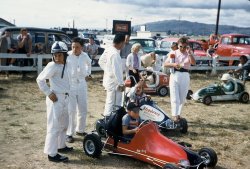
- Lost Dog: 1939
- ... responsible for the derailment & wreck of the "City of San Francisco" train.
Reward Poster My father, then a Western Pacific ... Posted by Dave - 12/04/2013 - 8:08pm -
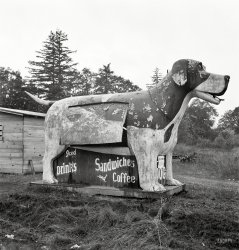
- Pilot Project: 1938
- ... resources in New York are being taxed. Money lies idle in San Francisco. An adjustment is made—by air. A Government official is in ... Posted by Dave - 12/15/2013 - 11:14pm -
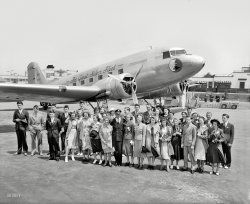
- Brunch with Cesar: 1956
- My mother, grandmother and Cesar Romero; San Francisco, CA 1956.
I'm assuming this was taken during brunch based on the ... Posted by four12 - 01/11/2013 - 8:55pm -
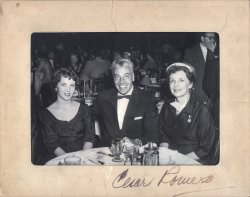
- Now Highering: 1912
- ... railway Many people will know of the cable cars of San Francisco, this picture shows a similar system in New York. The Broadway cable ... Posted by Dave - 10/16/2019 - 8:44pm -
![Now Highering: 1912 New York circa 1912. "Broadway, looking north from Cortlandt Street and Maiden Lane." Our second look in recent weeks at the Woolworth Building in the final stages of construction. 8x10 inch dry plate glass negative. View full size.
Mourning jewelry window signAs anyone who every watched "Antiques Roadshow" or has done any research into old jewelry knows, it used to be a common practice to mourn one's dear departed with "remembrance" jewelry to keep in mind the loved ones who are no longer with us. Some people were in mourning for years and others, like Queen Victoria, mourned her late husband Albert for the remainder of her long life. Lots of this jewelry has black stones or black metal and some of it even incorporated locks of hair of the deceased. Some of it was exquisite and very expensive and is in museums it is so valuable, and some not so much. I had never seen it advertised in other Shorpy pictures though, so this is a first for me.
"The Tubes"Pole sign, "Hudson Tunnels" - The Hudson and Manhattan Railway Tunnels - Known locally as "The Tubes"; service began between Lower Manhattan and Jersey City, July 19, 1909. Known today as the PATH System by the younger folk, but still the Tubes to me.
What, pray tell... is that statute on top of one of the buildings.
[Appropriately enough, it's atop the Walkover Building. -tterrace]
Cable railwayMany people will know of the cable cars of San Francisco, this picture shows a similar system in New York. The Broadway cable railway opened in 1893 and ran Battery Place from Whitehall Street to Broadway - Broadway to Seventh Avenue - Seventh Avenue to 59th Street.
The motive power was provided by a continuous steel cable running in a slot under the street between the rails. The central powerhouse was at Houston and Broadway.
[Those slots are for access to underground electrical conduits. The last of Manhattan's cable-powered lines had been converted to electricity by 1901. -tterrace]
street lightWhat is the smaller light (?) just behind the street light across Maiden Lane?
Conduit CleaningThe rectangular panels located between the streetcars' running rails and the centered slot rails were to allow access to the electrical conduit whenever necessary to clear the conduits accumulation of the abundant brown debris seen on the surface of the street.
PurportedlyWoolworth could see the completed building from his summer home, Winfield Hall, in Glen Cove on the North Shore of Long Island.
Just for comparison, The Woolworth Building started construction in 1910, and Winfield Hall was rebuilt (after a rather suspect fire) in 1916; the skyscraper cost an estimated $13.5M to build, while the rebuilt Winfield Hall racked up an impressive price-tag in excess of $11M -- including a $2M marble staircase.
Fire Alarm Box LightIn response to the post by Jmarksr: The smaller light beyond the streetlight marks the location of a Fire Alarm Box. This lamp will have a red glass shade. At night, one could immediately locate the nearest fire alarm box by looking for a red lamp.
In my youth, the globes in some towns & cities were red, and in others the globes were orange. I don't know why.
(Some towns also had green lamps on police call boxes.)
The early fire alarm boxes were "Telegraph" boxes which used an ultra-reliable spring-wound clockwork mechanism to tap out the code of the fire box on a dedicated telegraph line to the Fire Dept., where it was recorded as punch marks on a moving paper tape. (Later, some cities converted to an actual telephone system.)
The telegraph system was powered from lead-acid batteries at the Fire Dept. It would function even during a power failure, as the batteries could support the system for many days.
(The Gallery, DPC, NYC, Streetcars)](https://www.shorpy.com/files/images/SHORPY-4a25583a.thumbnail.jpg)
- Every Dog Has His Doubts: 1940
- ... carved in white aspen bark can still be found on the San Francisco peaks. My son and I spent many weekends hiking that country and we ... Posted by Dave - 05/27/2019 - 1:26pm -
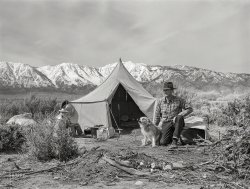
- Thirst Trap: 1940
- ... of the same spot is owned by the Fine Arts Museums of San Francisco:
Artist: Millard Donald Everingham
Date: 1941
Medium: ... Posted by Dave - 07/30/2018 - 8:18pm -
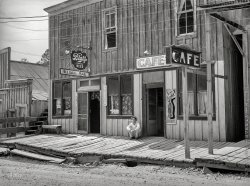
- Bethlehem-Fairfield: 1943
- ... his sea duty tour in the Armed Guard he was assigned to San Francisco as an Assistant Port Director. One of his jobs was to inspect and ... Posted by Dave - 10/19/2013 - 11:24am -
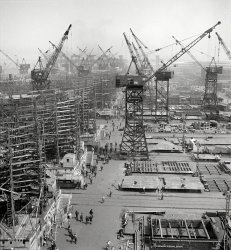
- Vivian Slippers: 1957
- ... Exactly! Circa 1965, five of us tried to park a VW Bug in San Francisco's North Beach theater district one night. We found a space with less ... Posted by Dave - 06/12/2017 - 9:08am -
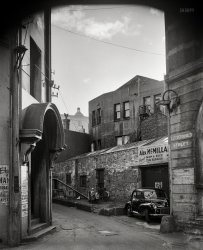
- REO Mountaineer: 1906
- June 1906. "REO Mountaineer, New York to San Francisco and back." Percy Megargel and David Fassett on 162nd Street in the ... Posted by Dave - 07/04/2014 - 9:06pm -
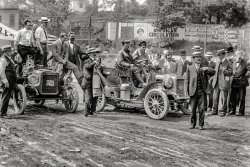
- Gladys Wagner: 1920s
- ... of her during the 1920s when she danced professionally in San Francisco. View full size.
Stories I hope your mother lived a long, ... Posted by chiliangel - 01/09/2012 - 1:47pm -
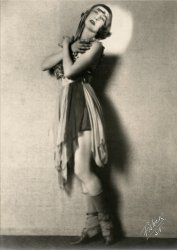
- Bus Baggage: 1943
- ... vu... Recently, flying home non-stop from Boston to San Francisco...
It felt exactly like we remember being treated as a Bus ... Posted by Dave - 09/17/2014 - 3:06pm -
![Bus Baggage: 1943 September 1943. "Pittsburgh, Pennsylvania. Bringing baggage from a bus." Photo by Esther Bubley for the Office of War Information. View full size.
Not in ColumbusThe bus may be Columbus bound but that big hotel in the background is the old Fort Pitt Hotel in Pittsburgh, Pennsylvania.
[Thankyou! - Dave]
It's very film noirish...in a dark, sort of gloomy way. A bus station in a dark, gritty downtown terminal.
You can almost smell it.
Fort Hayes HotelLooking at the sign on the building behind, that may be the Fort Hayes Hotel which is long gone.
Deja vu...Recently, flying home non-stop from Boston to San Francisco...
It felt exactly like we remember being treated as a Bus Passenger in the 1960's!
Ah, Esther!She's always great.
(The Gallery, Cars, Trucks, Buses, Esther Bubley, Pittsburgh)](https://www.shorpy.com/files/images/SHORPY-8d33007a.thumbnail.jpg)
- Neoclassical Gas: 1919
- San Francisco, 1919. "Hudson Biddle & Smart touring limousine at Palace of Fine ... International Exposition of 1915. Beloved by San Franciscans, it was the only structure retained afterward. The building ... Posted by Dave - 02/09/2017 - 12:14pm -
![Neoclassical Gas: 1919 San Francisco, 1919. "Hudson Biddle & Smart touring limousine at Palace of Fine Arts." Home, Fido! 5x7 glass negative by Christopher Helin. View full size.
Not exactlyThe 1960s reconstruction of the Palace is MOSTLY an exact replica of the 1915 version. The wall of the Palace itself facing the colonnade was originally fully decorated with freestanding and engaged columns identical to those of the colonnade, and the central doors facing the entrance to the rotunda were elaborately framed. This wall was rebuilt smooth, dull and blank (presumably to reduce costs) and its bareness is now screened by trees; the central doors now have minimal moldings framing them. The original concept as executed made the crescent walk behind the colonnade a much richer, more enclosing, visual experience than it is today. A bit of the pergola which crowned the original wall is visible in this photo.
Theft insurance.Love the chain and padlock on the spare tire.
During the big warThe lad on the right has a navy pea coat with chief petty officer rating. Some kids even had a full uniform to wear. Last war that happened.
[He must be standing behind the car. -tterrace]
ReduxThat's the original Palace of Fine Arts Rotunda, built of wood and "staff" (a mixture of plaster and straw) for the Panama-Pacific International Exposition of 1915. Beloved by San Franciscans, it was the only structure retained afterward. The building deteriorated so badly over the next 50 years that it had to be demolished in the fall of 1964. An exact replica was built in its place from permanent materials and was completed two years later.
Early SUVwith integral roof rails and requisite pooch.
FashionistaShe can also be seen here.
Hudson Sold ValueWhen this car was new autos often had mechanical troubles that made them difficult to drive. Hudson was a medium priced car that was both powerful & reliable for its time.
The Super Sixes as shown in this picture were the first production car to feature a counterbalanced crankshaft allowing higher engine speeds, more power & longer life than was typical at the time.
Another feature was a cork clutch which ran in oil that was smooth, long lasting and did not slip. Other types of clutches often jerked, burnt out or slipped. Every Hudson except the first & last years of production was equipped with a cork clutch.
With these mechanical advantages and a moderate price, Hudson sold a lot of Super Sixes and some were fitted with elite bodies such as those by Biddle & Smart.
(The Gallery, Cars, Trucks, Buses, Chris Helin, Dogs)](https://www.shorpy.com/files/images/SHORPY-1086.thumbnail.jpg)
- Family Excursion 1919
- ... Falls, California, on an excursion from their home in San Francisco. Their family car is a 1914 Hudson 6-54. Standing on the running ... Posted by tterrace - 12/04/2010 - 5:05pm -
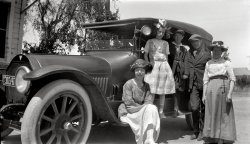
- Planespotting: 1942
- ... on Mt. Tamalpias that covered (with many blind spots) the San Francisco Bay Area. Our call sign was "Sliphorn."
Those were the days of the ... Posted by Dave - 01/19/2014 - 7:27pm -
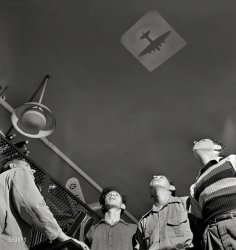
- Hot Rod Lincoln: 1924
- ...
What?! A vintage car pic that wasn’t taken in San Francisco?? Didn't think they existed.
Stickered From the look of all ... Posted by Dave - 12/14/2017 - 4:41pm -
![Hot Rod Lincoln: 1924 Washington, D.C., 1924. "Lincoln roadster at Ford Motor Building, Pennsylvania Avenue." 8x10 glass negative, National Photo Company. View full size.
What?!A vintage car pic that wasn’t taken in San Francisco?? Didn't think they existed.
StickeredFrom the look of all those badges, "I Get Around" would be appropriate, too.
1920s PhotographyA photo taken on a bright summer day, and the fellow walking up the street is still blurry. Would love to know the camera setting on this excellent photo.
A Canuck?I note a maple leaf on the back glass, and a plate that shows COL., for British Columbia maybe? He would be a long way from home.
[That's "Dist. Col.," as seen here. -tterrace]
Blame CanadaThe Canadian government purchased this site and surrounding lots in 1979, demolishing the Ford Building that same year. It's now the site of Canada's chancery building.
(The Gallery, Cars, Trucks, Buses, D.C., Natl Photo)](https://www.shorpy.com/files/images/SHORPY-31263u.thumbnail.jpg)
- Elko Depot: 1940
- ... On the pole next to the station: Milepost 556 from San Francisco.
Think the roof sign says 1 mile to the airport west of town.
... Posted by Dave - 02/20/2018 - 11:01am -
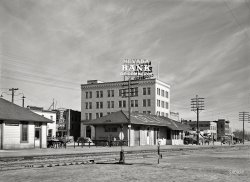
- Steamboat Gothic: 1938
- 1938. " 'San Francisco,' Reserve vicinity, St. John Parish, Louisiana. Steamboat Gothic ... Posted by Dave - 10/31/2016 - 8:08pm -
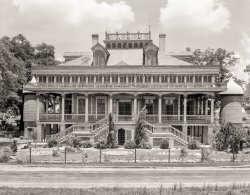
- Belles of the Ball: 1906
- ... 1906, at Astor House in New York -- the same day as the San Francisco earthquake. - Dave]
Stella! I wonder if they're relying on ... Posted by Dave - 08/08/2012 - 11:41pm -
![Belles of the Ball: 1906 New York, 1906. "The Gerson sisters in costume for the Crinoline Ball." Our second from this series of photographs by Gertrude Käsebier. View full size.
Not teenagersI usually associate events like a "Crinoline Ball" with coming-out parties or other festivities for young girls. This image shows, though, that the Gerson sisters were women -- maybe in their 30s? in 1906. Their arms look young, but this view shows their faces better than the earlier posting, and they aren't 16 year-olds, especially the one in the back. So, does anyone know what the Crinoline Ball was and who went?
[Virginia Gerson was 40 and her sister Minerva (Minnie) was about 50 when this picture was taken. The Crinoline Ball, a costume party, was held the evening of April 18, 1906, at Astor House in New York -- the same day as the San Francisco earthquake. - Dave]
Stella!I wonder if they're relying on the kindness of strangers, at this point.
(The Gallery, Gertrude Kasebier, Portraits)](https://www.shorpy.com/files/images/12067u.thumbnail.jpg)
- Virginia City With Cars: 1965
- ...
The Charlatans This was the same summer when San Francisco cult band The Charlatans had a residency at the Red Dog Saloon in ... Posted by tterrace - 09/18/2018 - 10:54pm -
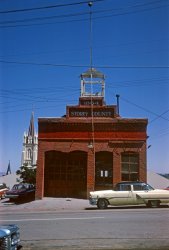
- Ensconced: 1925
- ... her mother was the official sponsor at the launching in San Francisco of the Clemson-class destroyer USS Selfridge, named for Mrs. ... Posted by Dave - 08/29/2012 - 2:09pm -
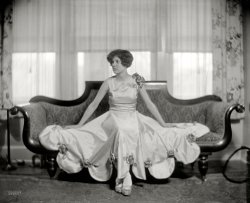
- Herman Miller: 1958
- ... Alexander and Susan Girard at the Herman Miller show in San Francisco. View larger. 35mm Kodachrome transparency, Charles & Ray ... Posted by Dave - 10/17/2019 - 9:15pm -
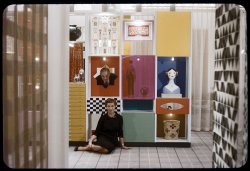
- Ghost Concourse: 1910
- ... similar in a panoramic photo on the Golden Gate Bridge in San Francisco. Instead of a long exposure, I did multiple exposures at several ... Posted by Dave - 07/30/2014 - 11:42am -
![Ghost Concourse: 1910 Circa 1910. "Train concourse, Union Station, Washington, D.C." Time exposure capturing hundreds of ephemeral footfalls. 8x10 glass negative. View full size.
GhostsI did something similar in a panoramic photo on the Golden Gate Bridge in San Francisco. Instead of a long exposure, I did multiple exposures at several angles, then stacked them in Photoshop, and used the statistics function to remove the differences (all the cars and pedestrians), and then stitched the panorama. Have a look below, though the 490 px width limits the photo's impact.
[Try this: Upload a larger second photo, uncheck "list" for both pictures, and use html to make the 490px photo enlarge. - Dave]
Be very, very still...I guess we can surmise that the man in the distance remained motionless for the entire exposure. How could he avoid checking his iPhone for such a long time?
Arc lamps?Those lights look like arc lamps. Are they? I've never seen arc lamps used indoors before. How were they serviced? Was there a way to lower them like outdoor arcs? And what about the fumes?
One of My Favorites This is a great photo. One of my all time favorites on Shorpy. I have it in my bookmarks to eventually order a print.
Sunlight through the skylights!It's too bad they had to block those skylights when they restored the building in the 80s. It's lovely to see how it was intended to look in the day, with the light pouring through.
(The Gallery, D.C., DPC, Railroads, Travel & Vacation)](https://www.shorpy.com/files/images/SHORPY-4a18758a.thumbnail.jpg)
- Scout Kar: 1918
- ... path. The inhabitants of the Pacific Coast from Seattle to San Diego swear they are "seeing things." A sheriff who has a record for ... "camouflage" in its charge. A committee of three prominent San Francisco artists will paint this car with color patches, which suggests ... Posted by Dave - 11/11/2014 - 7:38pm -
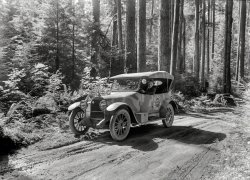
- Slush Bus: 1942
- ... and here is a photo shows one that is preserved by the San Francisco Municipal Railway (MUNI) in operating condition.
Palm Sunday ... Posted by Dave - 05/17/2019 - 5:53pm -
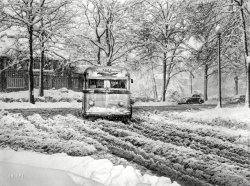
- Cape May: 1913
- ... largest collection of such homes in the nation after San Francisco. In 1976, the entire city of Cape May was officially designated a ... Posted by Dave - 08/13/2012 - 10:17pm -
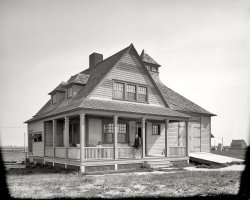
- Towers of the East: 1940
- ... Golden Gate International Exposition, Treasure Island, San Francisco, 1940. The Temple Compound and Towers of the East, designed by ... Posted by returntoBuddha - 05/04/2015 - 7:17pm -
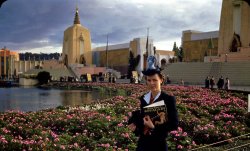
- Boy Scout and Grandfather
- ...
Charley's family lived in the South-of-Market area of San Francisco, but after getting chased out by the Great Earthquake and Fire, moved ... Posted by bowdidge - 06/28/2009 - 8:19am -
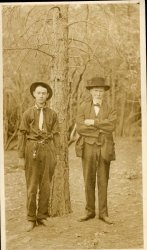
- Canal Street: 1907
- ... see in these two photos which tracks were the busiest. San Francisco's Market Street had four streetcar tracks, and was known colloquially ... Posted by Dave - 10/15/2020 - 10:50am -
![Canal Street: 1907 New Orleans circa 1907. "Canal Street." Center stage: A Streetcar Named Prytania. Composite image made from two 8x10 inch glass negatives. View full size.
Expensive healthcareIt is probably no coincidence that a Loan Office is in the same building as the National Dental Parlors.
Tooth-hurty1907 dentistry on an industrial scale ... now there's an appealing idea! "Those are screams of joy, kids -- no worries!" My mother recalls her 1930s visits to a dentist named Dr. Carpenter. Guess what sort of tools he used?
Details about the photoOf the five tracks in this view, only the two outer tracks were dual gauge. Actually, you can see it, just vaguely. It's the right-hand rail that was dual, and it looks like the railhead is wider. That's the effect of the double right-hand railheads next to each other (with just wheel flange clearance between them).
We can date the photo to no later than 1904. In that year, by Louisiana law, all vestibules had to be enclosed. I suspect it dates from 1900-1904.
[It was taken the same day as this view, whose negative is marked with a copyright date of 1907. - Dave]
The car with the Prytania clerestory sign was presumably assigned usually to that route, but is not at that moment on that route. A Prytania car would not be on that track. Note the Special sign hanging from the dash. I believe the car is on some kind of special assignment, perhaps a charter.
A Streetcar Named PrytaniaAs cool a photo as I've seen in a long time. Thank you, Dave
Drip - Drip - DripEarly streetcars and interurbans did not have sealed wheel and axle bearings. The result was that lubricating oil leaked out onto the pavement. You can readily see in these two photos which tracks were the busiest. San Francisco's Market Street had four streetcar tracks, and was known colloquially as "The Roar of the Four".
(The Gallery, DPC, New Orleans, Streetcars)](https://www.shorpy.com/files/images/SHORPY-Canal_Street_1.thumbnail.jpg)























